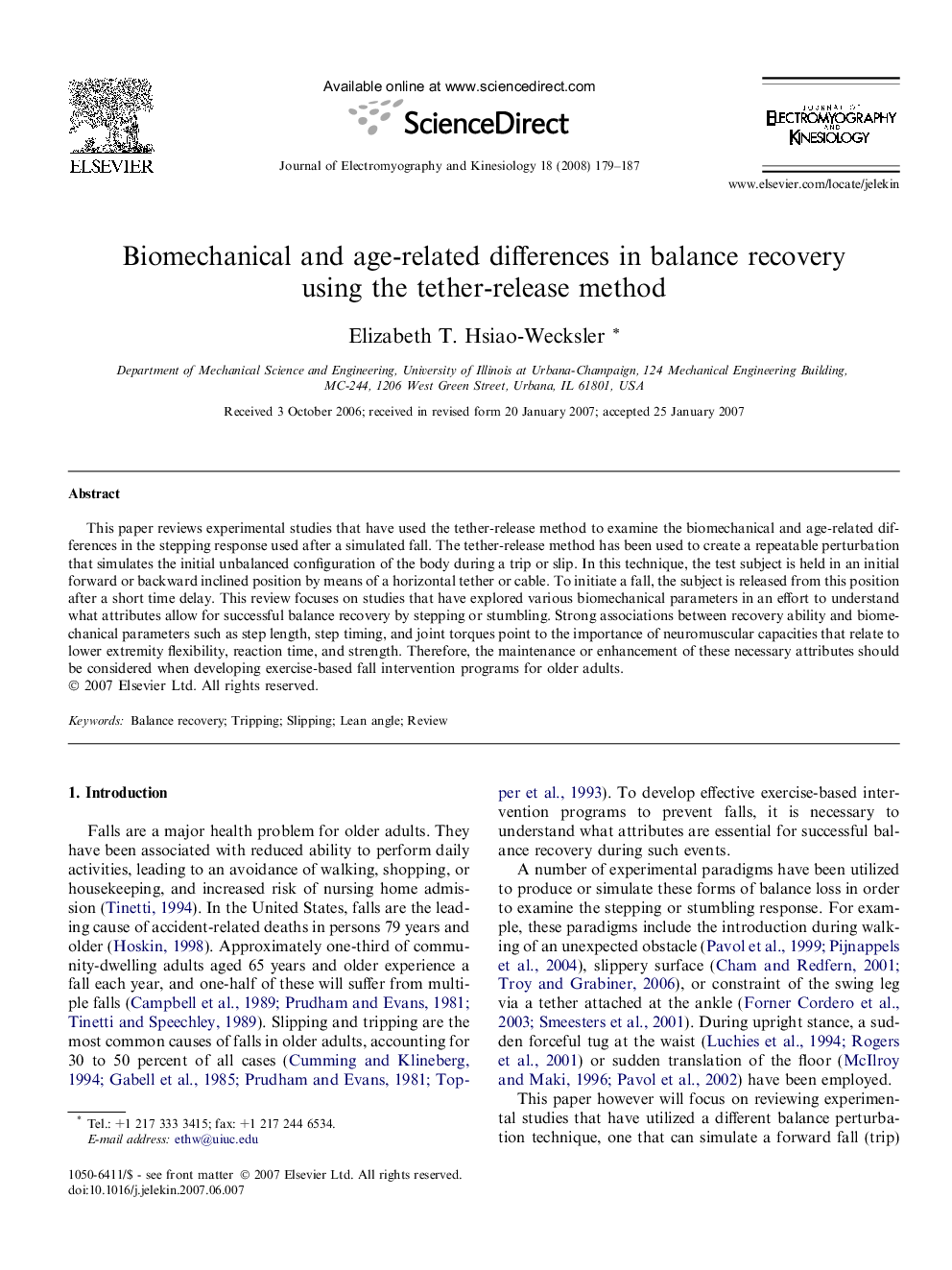| Article ID | Journal | Published Year | Pages | File Type |
|---|---|---|---|---|
| 4065735 | Journal of Electromyography and Kinesiology | 2008 | 9 Pages |
This paper reviews experimental studies that have used the tether-release method to examine the biomechanical and age-related differences in the stepping response used after a simulated fall. The tether-release method has been used to create a repeatable perturbation that simulates the initial unbalanced configuration of the body during a trip or slip. In this technique, the test subject is held in an initial forward or backward inclined position by means of a horizontal tether or cable. To initiate a fall, the subject is released from this position after a short time delay. This review focuses on studies that have explored various biomechanical parameters in an effort to understand what attributes allow for successful balance recovery by stepping or stumbling. Strong associations between recovery ability and biomechanical parameters such as step length, step timing, and joint torques point to the importance of neuromuscular capacities that relate to lower extremity flexibility, reaction time, and strength. Therefore, the maintenance or enhancement of these necessary attributes should be considered when developing exercise-based fall intervention programs for older adults.
